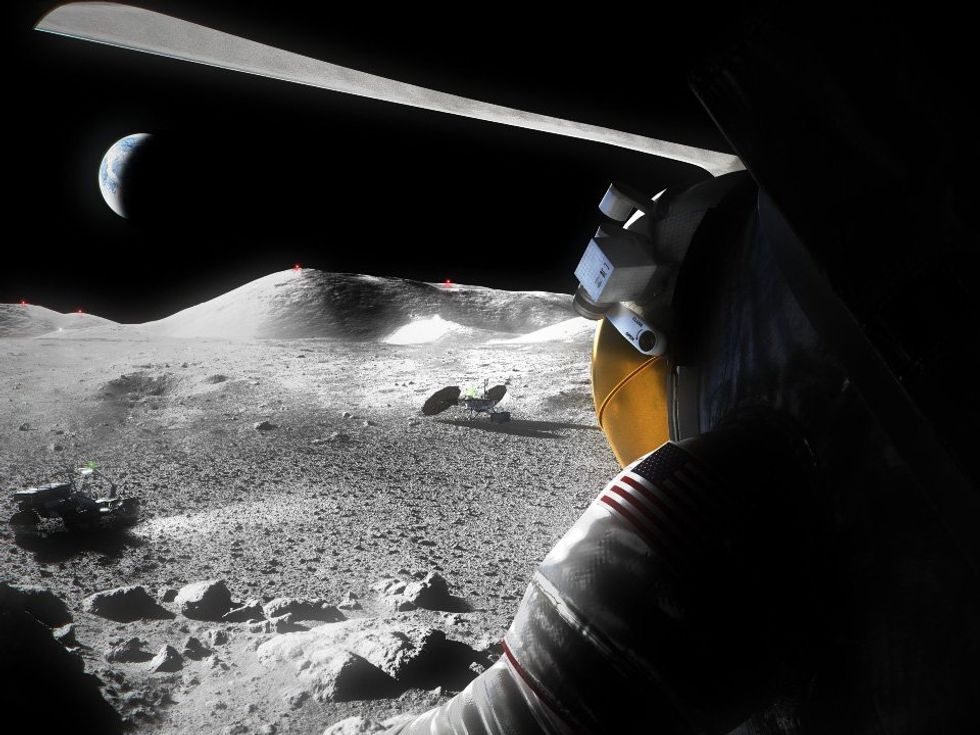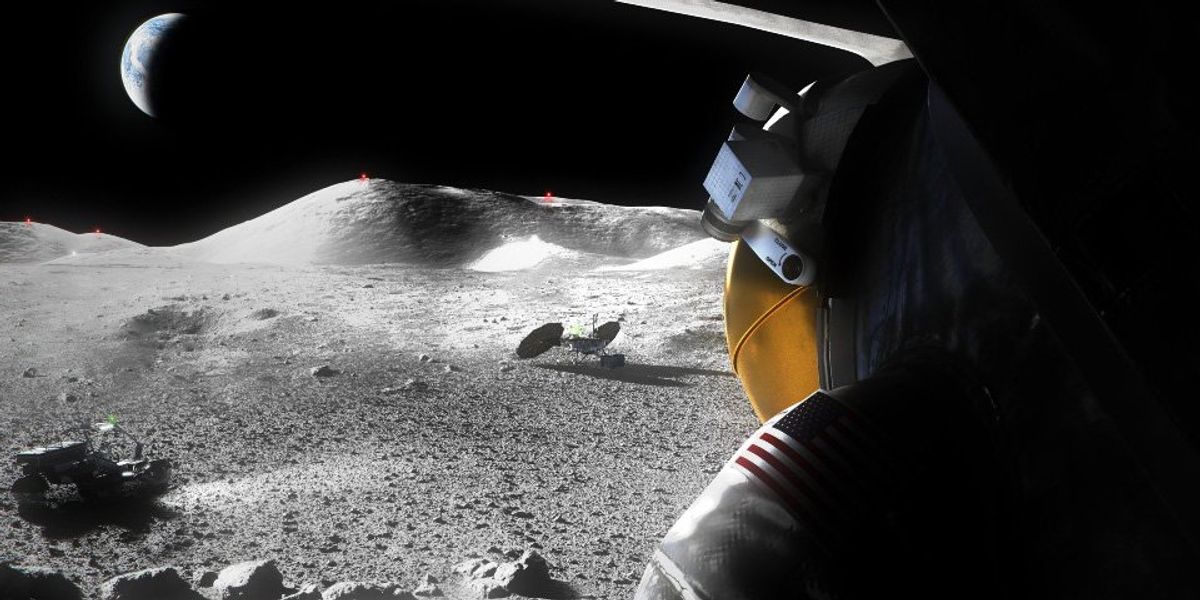
This text is a part of our unique IEEE Journal Watch collection in partnership with IEEE Xplore.
On 3 July 1996, Earth was going through all however absolute destruction from an alien power hovering above three of the world’s greatest cities. Hope of humanity’s survival dwindled after brute power did not thwart the attackers. However a small piece of malicious pc code modified the course of historical past when it was uploaded to the aliens’ pc system the following day. The malware—spoiler alert—disabled the invading ships’ defenses and in the end saved the destiny of humanity.
No less than, that’s what occurred within the wildly speculative 1996 sci-fi movie Independence Day.
But, for all of the reality-defying conditions the blockbuster depicted, the potential actuality of a malware assault wreaking havoc on a future crewed spacecraft mission has digital-security specialists very involved. Gregory Falco, an assistant professor of civil and techniques engineering at Johns Hopkins, explored the subject in a latest paper offered on the spring 2023 IEEE Aerospace Convention. Inspiration for the examine, he says, got here from his discovering a relative lack of cybersecurity options within the Artemis crew’s next-generation spacesuits.
“Possibly you would possibly take into consideration securing the communications hyperlink to your satellite tv for pc, however the stuff in house all trusts the remainder of stuff in house.”
—James Pavur, cybersecurity engineer
“The fact was that there was zero specification after they had their name for proposals [for new spacesuit designs] that had something to do with cyber[security],” Falco says. “That was irritating for me to see. This paper was not presupposed to be groundbreaking…. It was presupposed to be type of a name to say, ‘Hey, it is a downside.’ ”
As human spaceflight prepares to enter a brand new, fashionable period with NASA’s Artemis program, China’s Tiangong House Station, and a rising quantity of fledgling space-tourism firms, cybersecurity is a minimum of as a lot of a persistent downside up there as it’s down right here. Its magnitude is simply heightened by the truth that maliciously pushed system failures—within the chilly, unforgiving vacuum of house—can escalate to life or loss of life with only a few inopportune missteps. Apollo-era and even House Shuttle–period approaches to cybersecurity are overdue for an replace, Falco says.
“Safety by obscurity” not works
When america and different space-faring nations, such because the then–Soviet Union, started to ship people to house within the late Nineteen Sixties, there was little to worry in the way in which of cybersecurity dangers. Not solely did massively interconnected techniques just like the web not but exist, however expertise aboard these craft was so bespoke that it protected itself via a “safety by obscurity” method.
This meant that the expertise was so complicated that it successfully saved itself protected from tampering, says James Pavur, a cybersecurity researcher and lead cybersecurity software program engineer at software program firm Istari World.
A consequence of this safety method is that when you do handle to enter the craft’s inside techniques—whether or not you’re a crew member or maybe in years to come back an area vacationer—you’ll be granted full entry to the web techniques with primarily zero questions requested.
This safety method shouldn’t be solely insecure, says Pavur, however it’s also vastly totally different from the zero-trust method utilized to many terrestrial applied sciences.
“Cybersecurity has been one thing that type of stops on the bottom,” he says. “Like possibly you would possibly take into consideration securing the communications hyperlink to your satellite tv for pc, however the stuff in house all trusts the remainder of stuff in house.”
NASA is not any stranger to cybersecurity assaults on its terrestrial techniques—almost 2,000 “cyber incidents” have been made in 2020 in line with a 2021 NASA report. However the forms of threats that would goal crewed spacecraft missions can be a lot totally different from phishing emails, says Falco.
What are the cyberthreats in outer house?
Cyberthreats to crewed spacecraft might give attention to proximity approaches, equivalent to putting in malware or ransomware right into a craft’s inside pc. In his paper, Falco and coauthor Nathaniel Gordon lay out 4 ways in which crew members, together with house vacationers, could also be used as a part of these threats: crew because the attacker, crew as an assault vector, crew as collateral injury, and crew because the goal.
“It’s virtually akin to medical-device safety or issues of that nature fairly than opening e mail,” Falco says. “You don’t have the identical type of threats as you’ll have for an IT community.”
Amongst a number of troubling eventualities, proprietary secrets and techniques—each personal and nationwide—could possibly be stolen, the crew could possibly be put in danger as a part of a ransomware assault, or crew members may even be intentionally focused via an assault on safety-critical techniques like air filters.
All of these kind of assaults have taken place on Earth, say Falco and Gordon of their paper. However the excessive degree of publicity of the work in addition to the built-in nature of spacecraft—shut bodily and community proximity of techniques inside a mission—may make cyberattack on spacecraft significantly interesting. Once more heightening the stakes, the cruel setting of outer (or lunar or planetary) house renders malicious cyberthreats that rather more perilous for crew members.
To this point, lethal threats like these have gratefully not affected human spaceflight. Although if science fiction offers any over-the-horizon warning system for the form of threats to come back, think about sci-fi classics like 2001: A House Odyssey or Alien—wherein a nonhuman crew member is ready to management the crafts’ computer systems so as to change the ship’s route and to even stop a crew member from leaving the ship in an escape pod.
Proper now, say Falco and Gordon, there may be little to maintain a foul actor or a manipulated crew member onboard a spacecraft from doing one thing related. Fortunately, the rising presence of people in house additionally offers a possibility to create significant {hardware}, software program, and coverage modifications surrounding the cybersecurity of those missions.
Saadia Pekkanen is the founding director of the College of Washington’s House Legislation, Information and Coverage Program. With a purpose to create a fertile setting for these improvements, she says, it will likely be necessary for space-dominant nations like america and China to create new insurance policies and laws to dictate how one can tackle their very own nations’ cybersecurity danger.
Whereas these modifications gained’t instantly have an effect on worldwide coverage, choices made by these nations may steer how different nations tackle these issues as nicely.
“We’re hopeful that there continues to be dialogue on the worldwide degree, however loads of the regulatory motion is definitely going to come back, we expect, on the nationwide degree,” Pekkanen says.
How can the issue be mounted?
Hope for an answer, Pavur says, may start with the truth that one other sector in aerospace—the satellite tv for pc business—has made latest strides towards better and extra strong cybersecurity of their telemetry and communications (as outlined in a 2019 overview paper printed within the journal IEEE Aerospace and Digital Programs).
Falco factors towards related terrestrial cybersecurity requirements—together with the zero-trust protocol—that require customers to show their identification to entry the techniques that hold safety-critical operations separate from all different onboard duties.
Making a safety setting that’s extra supportive of moral hackers—the type of hackers who break issues to search out safety flaws so as to repair them as a substitute of exploit them—would supply one other essential step ahead, Pavur says. Nevertheless, he provides, this is likely to be simpler stated than finished.
“That’s very uncomfortable for the aerospace business as a result of it’s simply not likely how they traditionally thought of menace and danger administration,” he says. “However I feel it may be actually transformative for firms and governments which are prepared to take that danger.”
Falco additionally notes that house tourism flights may benefit from a spacefaring equal of the TSA—to make sure that malware isn’t being smuggled onboard in a passenger’s digital units. However maybe most necessary, as a substitute of “chopping and pasting” imperfect terrestrial options into house, Falco says that now could be the time to reinvent how the world secures crucial cyber infrastructure in Earth orbit and past.
“We must always use this chance to give you new or totally different paradigms for a way we deal with safety of bodily techniques,” he says. “It’s a white house. Taking issues which are half-assed and don’t work completely to start with and popping them into this area shouldn’t be going to essentially serve anybody the way in which we’d like.”
From Your Website Articles
Associated Articles Across the Net

